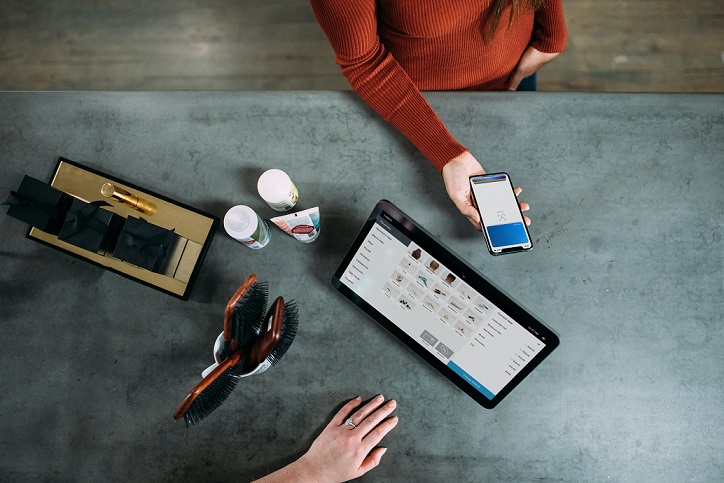According to Visa Europe, more than 3 billion contactless payments were made last year. Throughout today's retail landscape, there is no shortage of new technology solutions working to improve the shopping experience for customers. Automated convenience stores are now commonplace in major cities around the world.
Shoppers are increasingly turning to self-checkouts for anything from clothing to computers, and the trend is gaining traction with both businesses and consumers. Now, convenience isn't just about having access to a wide variety of things but also about how long you have to wait in line. There is a new set of expectations and additional opportunity for retailers to build their operations as contactless commerce shopping experiences emerge today.
This might begin with the option to make purchases without having to sift through wallets and exchange money with store workers. Regarding meeting consumer needs, 44 percent of small and medium-sized firms say contactless or other mobile payment methods are essential. In contrast, 74% of small and medium-sized enterprises expect their customers to prefer contactless payments as much as they do now.
However, this is only the beginning of the process. Contactless shopping encompasses various technologies that transform retail experiences across the customer journey. Checkout less stores is part of the shopping experience; other features include arriving at the store and making product selections.

Contactless shopping
Contactless Shopping Refers to What?
The term "contactless shopping" encompasses many methods for making purchases without inputting a PIN code or swiping a credit card. whole foods contactless payment will soon be so widely used that it will eliminate the requirement for any human interaction during checkout or delivery. However, let's take a step back and look at the first portion of the term.
Mobile wallets and credit cards with tap-to-pay chip technology are the most widely recognized contactless payment solutions. A variety of mobile wallet apps allow you to save all of your credit and debit cards, as well as digital membership cards and coupons, all in one location. Instead of digging through their purses at checkout, your customers can whip out their mobile wallets, select their preferred payment option, and finish their purchase in a matter of seconds when they arrive at your business.
The Self-Checkout Station Is Making a Comeback at More Stores Around the World:
One of the world's most significant fashion labels, Zara, has integrated self-checkout retail stations at its newly-built 65,000 sq ft shop in Madrid (their largest store worldwide), which opened in April last year. In locations like Beijing and Shanghai, more Chinese retailers are experimenting with self-checkout establishments open 24 hours a day, seven days a week, outside Europe. Amazon is also introducing its amazon contactless store, where customers can shop without going through a checkout line. In addition, Long Island Walmart will accept contactless payments before the end of the year.
Everything Relates to Ensuring a Smooth Shopping Experience:
Barclays predicts a 300 percent growth in contactless buying by 2022. Many retailers have yet to accept contactless payments, but this is expected to change. What's behind the rise of "touch and go" spending? It doesn't matter whether or not contactless shopping becomes popular; the reality remains that it streamlines the checkout procedure for customers. Retailers are working hard to make the payment process more personalized, just as new technologies like machine learning and AI are expected to revolutionize how consumers shop.

Better shoppig experience
Already, Many Retailers Have the Capability:
Retailers have only come to terms with the fact that checking out in a physical store is essential to the customer experience. Because of this, new technologies like contactless shopping are helping to reshape the retail industry. Though most retail establishments are financially and technologically capable of eliminating checkout lines, many are hesitant to accept contactless payments. Branding decisions are the only factor in whether or not to do so, and they revolve around the whole experience you're seeking to create for customers.
While some digital innovation alternatives might not be perfect for every retail merchant, there are simple ways retail brands can include tech solutions to jump on the revolution to keep the old checkout queues. Any firm can benefit from using self-checkout technology as a starting point.
Retailers are increasingly using electronic shelf labels:
Traditional paper pricing tags are replaced with ESL (Electronic Shelf Label) technology in retail stores. Global ESL sales are predicted to rise by 30% between 2018 and 2020, reaching $2 billion in revenue in 2019. ESL is capable of displaying product information in a straightforward and precise manner. Most ESL is built out of PC or ABS plastics. As a result, unlike a paper price tag, it is tough to damage. Because it just uses electricity to update data, ESL's battery can last up to three years or even longer before needing to be replaced. As a result, ESL is well-suited to the retail sector but can also be used in other settings such as warehouses and logistics.
For example:
Product Name: DZ026
Commodity information diversity, compact commodity placement, and frequent price changes are the key hurdles for ESLs in retail applications. DZ026's small form makes it ideal for close placements where space is at a premium. Using the ESL Cloud Platform & Cloud Tag APP, which is included with our ESL solution, we can implement dynamic price changes in a matter of seconds.
DZ026 showcase video
How Might Retail Employees Benefit from Contactless Shopping?
Giving customers more control over their purchases is a win-win situation for both the retailer and the customer. Employees used to spend a lot of time juggling many customers' requests, which included finding products or information that customers could now obtain thanks to technological advances.
Customers who want to buy without the assistance of a clerk may benefit from the increased use of contactless shopping, which could help alleviate some of the present retail sector staffing shortages.
Contactless shopping options may also allow establishments to remain open during off-peak hours, such as holidays, weekends, and nighttime, which may be more convenient for some customers but less convenient for personnel.
Conclusion:
In the interim, contactless shopping experiences are expected to focus on making it easier for consumers to find what they're looking for and speeding up the process of purchasing it. Using checkout technologies that do not require a cashier can help retailers manage inventory and reduce labor costs



